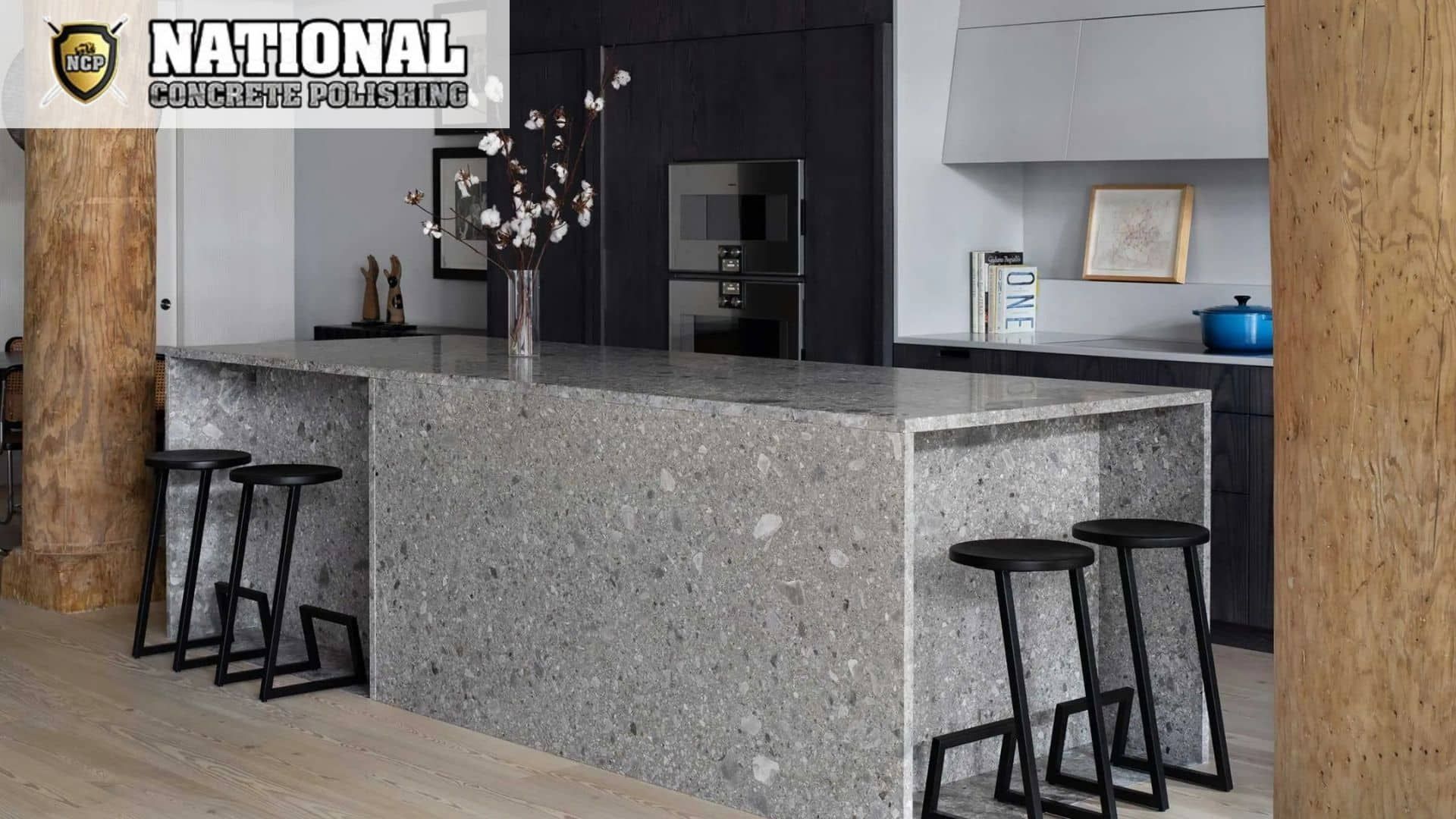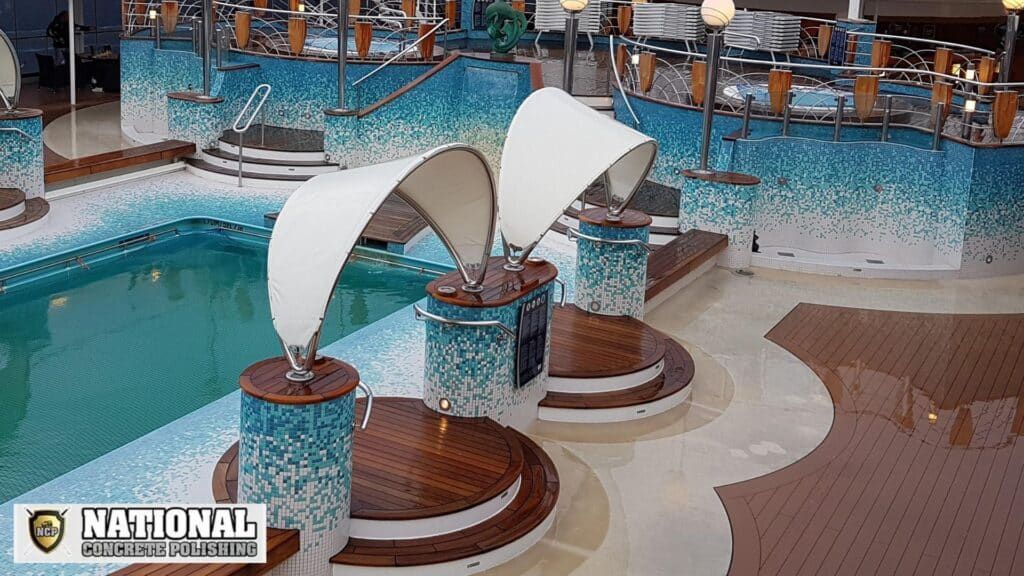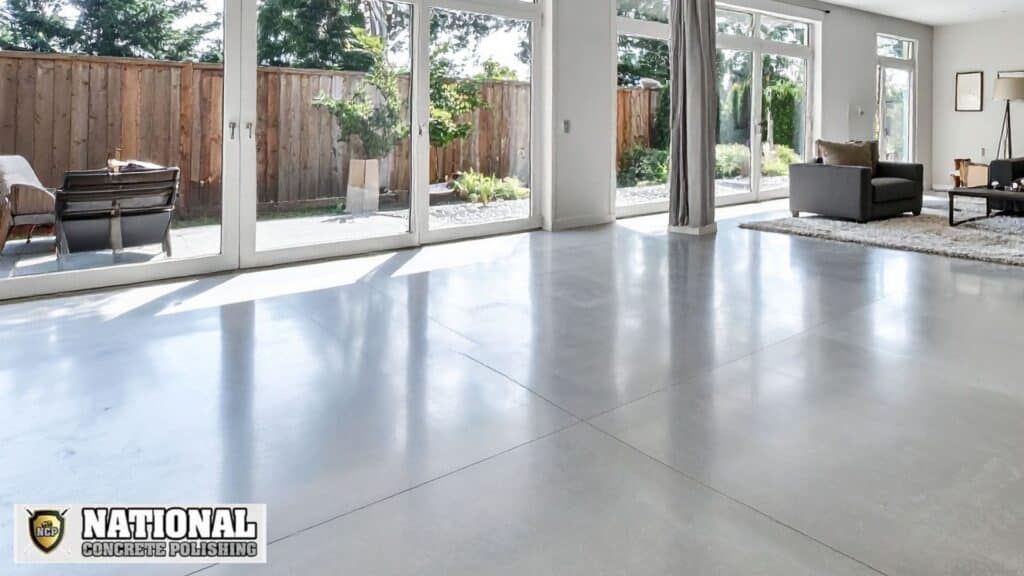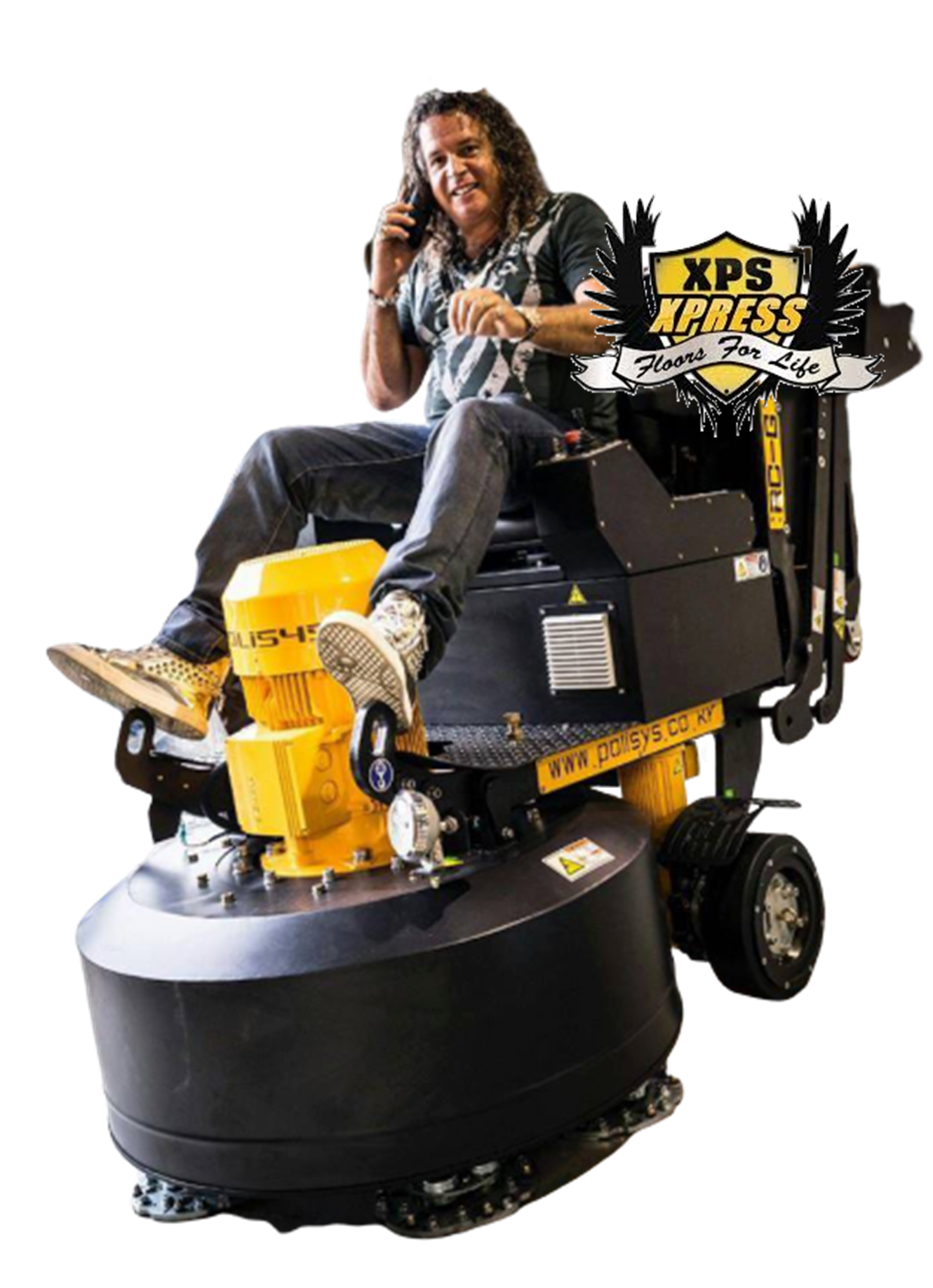Refresh Your Outdoor Space: Concrete Patio Resurfacing Tips
A single resurfacing project can add 20 years to your patio’s lifespan, turning weather-worn slabs into vibrant entertainment zones. Instead of costly replacements, modern techniques revive cracked or stained surfaces while preserving structural integrity. This approach saves time and money while delivering dramatic visual upgrades.
Decorative overlays offer endless design flexibility, mimicking materials like natural stone or brick without the premium price tag. These solutions work for outdated slabs, uneven textures, or faded colors, creating cohesive outdoor areas that align with your home’s style. Proper preparation ensures adhesion and durability, whether you tackle small repairs yourself or hire professionals.
Seasonal plants and furniture arrangements gain new life against refreshed surfaces. Strategic updates elevate curb appeal and functionality, making your yard feel like an extension of your living room. With smart material choices, you’ll enjoy lasting results that withstand foot traffic and weather extremes.
Key Takeaways
- Resurfacing extends your patio’s usability by decades compared to full replacements
- Decorative finishes replicate high-end materials at a fraction of the cost
- Proper surface preparation prevents future cracks and peeling
- Custom designs maintain structural safety while reflecting personal style
- Professional installation ensures optimal adhesion and longevity
Understanding the Advantages of Concrete Patio Resurfacing
Breathing new life into weathered outdoor areas costs 40-60% less than full replacements. Modern methods restore structural integrity while adding contemporary styles unavailable during your slab’s original installation. This approach skips messy demolition, preserving your yard’s layout and mature landscaping.
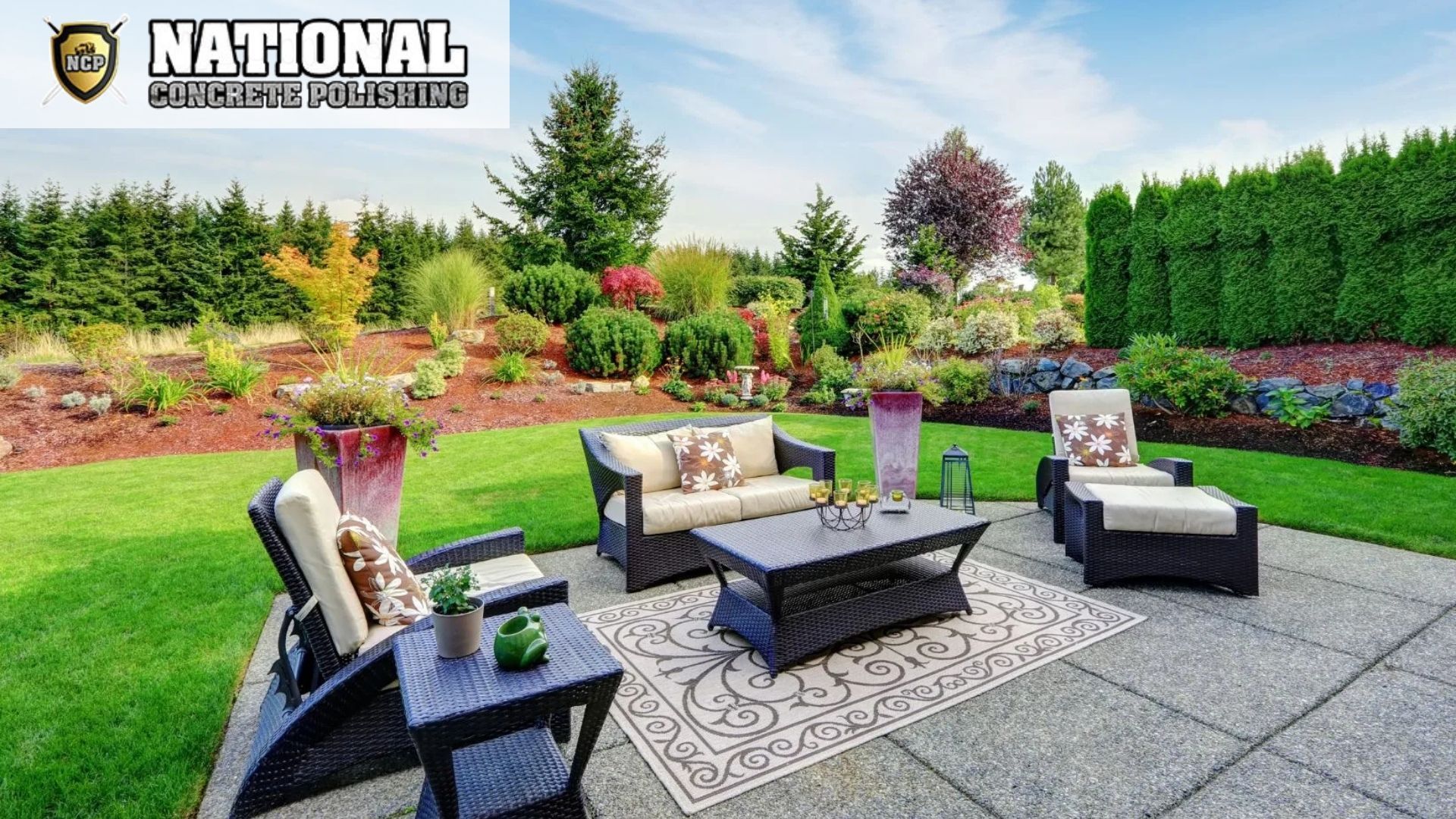
| Factor | Resurfacing | Replacement |
|---|---|---|
| Project Duration | 2-4 Days | 7-14 Days |
| Average Cost | $3-$7/sq.ft. | $8-$15/sq.ft. |
| Design Flexibility | High (50+ finishes) | Limited to basic shapes |
Revitalize Your Outdoor Space
Stained or cracked slabs become sleek entertainment zones through strategic overlays. Thin polymer-modified coatings bond tightly to existing surfaces, filling hairline fractures and preventing moisture damage. Choose from modern stamped patterns or subtle acid stains that mimic premium materials.
Boost Curb Appeal and Property Value
Homes with upgraded outdoor areas sell 3.5% faster, per recent real estate studies. Decorative finishes create visual continuity between your house and yard. Non-slip textures improve safety during rainy seasons while maintaining polished aesthetics.
Evaluating Your Existing Concrete Surface
Before planning any upgrades, a thorough inspection reveals whether your outdoor area can support new treatments. Start by clearing debris and sweeping the entire space to expose hidden flaws. Look for uneven sections that could trap water or create tripping hazards.
Identifying Cracks and Wear Patterns
Examine the slab using these professional assessment criteria:
- Measure crack widths with a ruler – anything under 1/8 inch usually qualifies for repairs
- Check for spiderweb patterns indicating surface stress versus straight-line structural splits
- Press loose areas with a screwdriver – crumbling material needs removal before treatment
Discoloration often signals moisture penetration, while flaking surfaces show weathering damage. Professionals recommend marking problem zones with chalk for visual reference. This helps prioritize repairs and estimate material needs accurately.
Deep fractures wider than 1/4 inch or vertical shifts between slab sections may require replacement. Schedule a contractor consultation if you find multiple issues – their pressure testing and core sampling methods confirm long-term viability.
Essential Surface Preparation for Resurfacing Success
Achieving a flawless finish starts with meticulous preparation of your current slab. This stage determines whether new materials bond properly or peel within months. Follow industry standards to create a stable base that supports decorative treatments for decades.
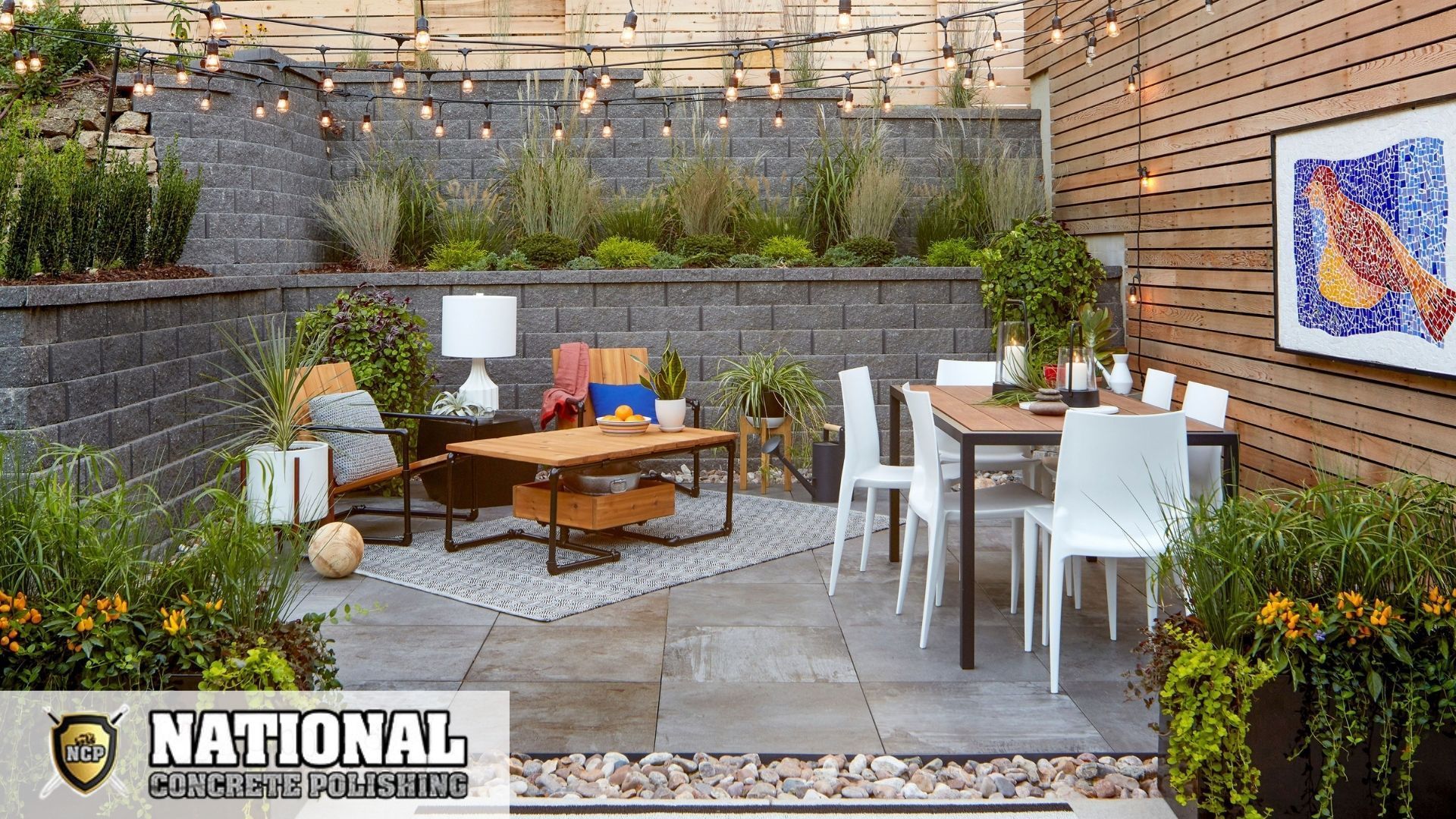
Cleaning and Debris Removal Techniques
Begin by pressure washing at 3000-4000 PSI to blast away grime and loose particles. For oil stains, apply biodegradable cleaners like Neutra Clean overnight. Let the area dry completely before inspecting for remaining contaminants.
| Method | Best For | Products/Tools |
|---|---|---|
| Chemical Stripping | Paint/sealer removal | Strip-It, E-Etch |
| Mechanical Grinding | Stubborn coatings | Diamond grinders |
| Media Blasting | Detailed textures | Silica sand, baking soda |
Proper Surface Profiling and Adhesion
Create a rough texture using shot blasters or scarifiers after cleaning. This opens pores in the slab for mechanical bonding. Repair cracks wider than 1/8 inch with polymer-modified patching compounds before final profiling.
Test adhesion by applying water droplets. Properly prepared surfaces absorb moisture within 10 seconds. Consult ICRI guidelines for surface profile depth requirements based on your chosen resurfacing product.
Options for Resurfacing Concrete Patio
Outdated slabs become design canvases through advanced material applications. Thin layers of specialized compounds restore surfaces while introducing fresh aesthetics. These methods address minor imperfections and elevate visual impact simultaneously.
Creative Surface Enhancements
Polymer-modified mixtures bond tightly to existing slabs, creating durable foundations for artistic expression. Stamped finishes replicate natural stone textures through flexible molds pressed into fresh material. Choose from cobblestone, wood grain, or geometric patterns that withstand foot traffic.
Advanced Protective Coatings
Cement-based micro-toppings create sleek surfaces at 1/8-inch thickness, ideal for contemporary spaces. Epoxy systems combine color pigments with industrial-grade resins, forming chemical-resistant barriers. These glossy finishes work well near pools or outdoor kitchens due to their stain-proof qualities.
Key differences between popular techniques:
| Method | Thickness | Best Use |
|---|---|---|
| Stamped Overlays | 1/4 – 1/2 inch | Pattern replication |
| Micro-Topping | 1/8 – 1/4 inch | Smooth refinishing |
| Epoxy Coatings | 1/16 inch | High-traffic areas |
Comparing Resurfacing Materials and Techniques
Selecting the right solution depends on your surface conditions and desired outcomes. Each material offers distinct benefits, from weather resistance to design versatility. Understanding these differences helps create lasting results that match your lifestyle needs.
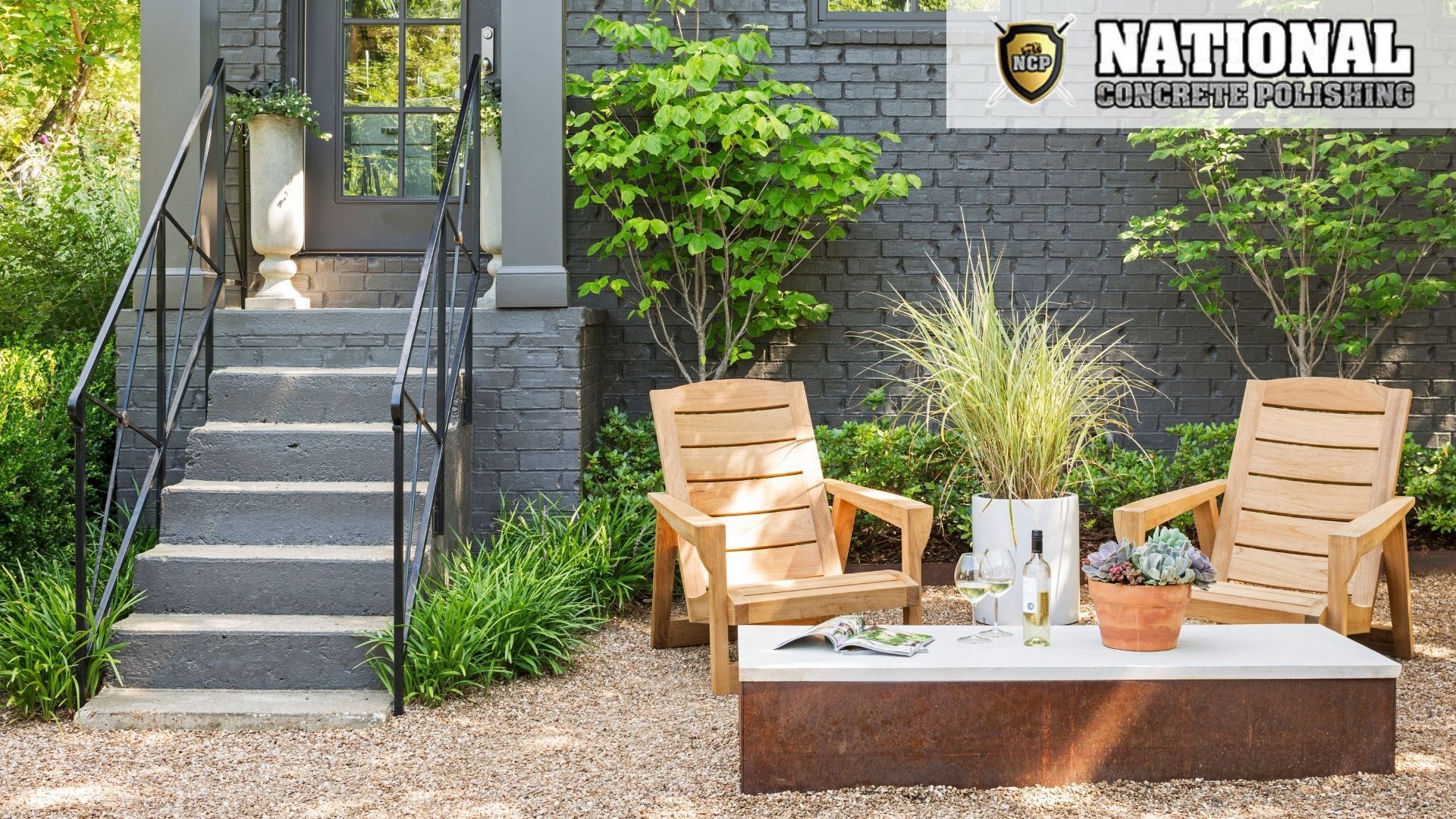
Acrylic Overlays vs. Epoxy Coatings
Acrylic-based systems excel in residential settings with moderate use. They support vibrant color integration and cure within hours, minimizing downtime. These overlays adapt well to temperature changes, reducing crack risks in fluctuating climates.
Epoxy coatings outperform others in commercial or high-use zones. Their chemical-resistant formula handles grease spills and harsh cleaners effortlessly. While less flexible, they form a seamless barrier against moisture penetration and UV damage.
Cementitious Resurfacers and Polyurethane Toppings
Cementitious blends provide budget-friendly solutions with strong adhesion. Ideal for foundational repairs, they accept stains or dyes for basic customization. These work best on stable slabs needing minimal decorative enhancement.
Polyurethane systems absorb impacts from furniture moves or falling objects. Their elastic nature accommodates slight substrate shifts, preventing surface fractures. This makes them suitable for areas with seasonal ground movement.
| Material | Best Use | Key Strength |
|---|---|---|
| Acrylic Overlay | Residential designs | Color variety |
| Epoxy Coating | High-traffic zones | Stain resistance |
| Cementitious | Structural repairs | Cost efficiency |
| Polyurethane | Movement-prone areas | Flexibility |
Enhancing Aesthetic Appeal with Custom Finishes
Transform your outdoor area into a design masterpiece through advanced coloring and texturing methods. Modern techniques turn basic slabs into artistic statements that mirror high-end materials without compromising durability. This approach lets you express personal style while maintaining structural integrity.
Color Stains, Dyes, and Antiquing Methods
Acid stains create organic, marbled effects that vary across your surface. These react chemically with the material, producing earthy tones like terracotta or weathered bronze. Water-based alternatives offer 400+ pre-mixed shades for precise color matching.
Dyes penetrate deeply for intense hues that withstand UV exposure. They work well in covered spaces where vibrant blues or emeralds pop against neutral surroundings. Antiquing solutions add depth by highlighting grooves and edges, perfect for rustic or vintage-inspired designs.
Textured and Natural Stone Effects
Specialized stamping mats imprint realistic stone patterns into fresh overlays. Choose from slate, travertine, or fieldstone textures that feel authentic underfoot. Skilled applicators layer colors and finishes to mimic natural variations in quarried materials.
Combining techniques yields truly unique surfaces. Pair a limestone texture with subtle gray staining for a French-country aesthetic. Add metallic epoxy accents to a stamped flagstone design for contemporary contrast. These methods elevate standard slabs into bespoke landscape features.
Safety, Durability, and Maintenance Considerations
Ensuring your outdoor space remains both safe and visually appealing requires smart maintenance strategies. Proper care protects your investment while addressing potential hazards caused by weather or daily use. Let’s explore practical solutions that balance security with lasting performance.
Secure Footing in Wet Conditions
Textured finishes and anti-slip additives reduce accident risks in rain-prone zones. Polymer-based sealants with grit particles enhance traction without compromising aesthetics. These treatments work especially well near pools, entryways, and dining areas where moisture gathers.
Preserving Your Surface Over Time
Different materials demand specific care routines. Acrylic finishes typically need resealing every 2-3 years, while epoxy systems require less frequent attention. Regular sweeping and mild detergent cleaning prevent dirt buildup that accelerates wear.
| Material | Lifespan | Key Maintenance |
|---|---|---|
| Acrylic Overlay | 5-10 Years | Annual deep cleaning |
| Epoxy Coating | 10-15 Years | Reseal every 3 years |
| Decorative Overlay | 7-12 Years | Biennial resealing |
Watch for fading colors or minor cracks as early recoating signals. Address stains promptly using manufacturer-approved cleaners. In freeze-thaw climates, choose flexible materials that resist temperature-induced stress.
National Concrete Polishing: Quality & Expertise in South Florida
South Florida’s tropical climate demands specialized solutions for outdoor living spaces. National Concrete Polishing brings 15+ years of hands-on experience addressing humidity, salt air, and intense sun exposure across residential and commercial projects. Our team combines technical precision with artistic vision to revive weathered surfaces.
Learn About Our Experience and Local Presence
We’ve mastered the science behind durable installations in coastal environments. Our technicians evaluate soil composition and drainage patterns unique to each property. This attention to detail prevents premature wear from seasonal rains or shifting substrates.
Every project begins with a 12-point inspection. We assess:
- Surface porosity and moisture content
- Existing damage patterns
- Sun exposure angles
- Local building code requirements
Our inventory includes polymer-modified overlays and UV-stable sealants specifically formulated for Florida’s conditions. These materials withstand temperature swings while maintaining color vibrancy. We employ industrial-grade equipment unavailable to DIY enthusiasts, ensuring flawless application.
Homeowners appreciate our collaborative approach to design challenges. Whether restoring historic properties or modernizing pool decks, we tailor solutions to match architectural styles. Call +1 877-661-7562 to discuss how our regional expertise can transform your space.
Conclusion
Revitalizing your outdoor living area doesn’t require starting from scratch. Modern methods breathe new life into aging slabs through strategic upgrades that balance style and practicality. With projects often finishing in 1-5 days, you’ll enjoy refreshed spaces faster than traditional replacements allow.
Key decisions involve matching materials to your lifestyle needs. Simple overlays work wonders for quick makeovers, while intricate designs demand more time but deliver showstopping results. Proper cleaning and crack repairs form the foundation for lasting performance, whether you choose stamped patterns or sleek coatings.
Partnering with skilled contractors ensures precise execution from start to finish. Their expertise helps navigate surface challenges and weather considerations unique to your region. You’ll gain durable, eye-catching results that elevate outdoor gatherings and boost property value.
Armed with these insights, you’re ready to transform tired slabs into inviting extensions of your home. Thoughtful planning and quality craftsmanship create outdoor areas that withstand years of enjoyment while reflecting your personal aesthetic.
FAQ
How long does it take to complete a resurfacing project?
Most projects take 2–4 days, including surface prep and curing time. Thinner overlays dry faster (24–48 hours), while stamped finishes may require extra time for texture and color treatments.
Can damaged or uneven surfaces be repaired before applying overlays?
Yes. Cracks wider than 1/8 inch need filling, and spalled areas require patching. Proper leveling ensures adhesion and prevents future issues with decorative coatings or micro-toppings.
What’s the difference between acrylic and epoxy materials?
Acrylic coatings offer UV resistance and flexibility for outdoor use. Epoxy provides superior durability but may yellow in sunlight. Both work for patios, but climate and traffic influence the best choice.
Are slip-resistant finishes available for pool decks?
Absolutely. Additives like polymer grit or textured stamps improve traction. Some contractors use anti-slip sealers on stamped concrete or exposed aggregate finishes for safer walkways.
How often should recoating be done to maintain the surface?
High-quality systems last 5–10 years. Annual cleaning and resealing every 2–3 years extend longevity. Monitor wear in high-traffic zones like pathways or outdoor kitchens for timely touch-ups.
Can I replicate natural stone without replacing my patio?
Yes. Stamped overlays mimic slate, flagstone, or cobblestone. Skilled applicators use release agents and hand-tooling to create realistic patterns. Color hardeners enhance the stone-like appearance.
Does temperature affect the installation process?
Ideal conditions are 50–85°F with low humidity. Cold weather slows curing, while heat accelerates drying—both impact adhesion. Professionals use additives or curing blankets to manage extreme climates.
What maintenance is required for dyed or stained finishes?
Sweep regularly and wash with pH-neutral cleaners. Avoid harsh chemicals that strip color. Reapply penetrating sealers every 2–3 years to protect against fading and moisture absorption.

